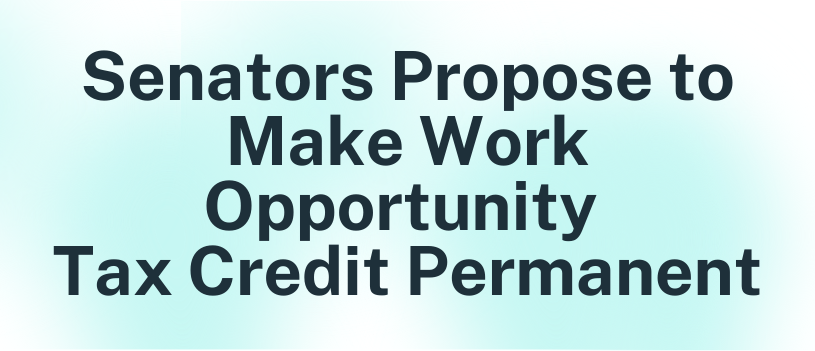The Work Opportunity Tax Credit (WOTC) is currently in the works to become a permanent part of the tax code and is being led by a bipartisan group of Senate lawmakers. It is offering employers tax credits per worker dependent upon hiring and retaining employees from populations that are out of the labor force, or have a hard time getting a job.
These tax credits range between $1,200 and $9,600. The amount depends on the wages paid to those hired who fall into specific categories including ex-felons, veterans, those that are disabled, long-term unemployed, summer youth workers, and people in government aid programs (Temporary Assistance for Needy Families TANF), Supplemental Security Income (SSI) and the Supplemental Nutrition Assistance Program (SNAF)).
In December, Congress passed a stimulus package that extended the WOTC through 2025, along with other tax provisions. This program is widely accepted with bipartisan support because of the incentives for employers to hire people that are largely dependent on government support and assistance.
Some people believe that this WOTC should be permanent, but are glad that it has at least been extended for five more years. It was reported that with the ongoing issues of the pandemic, that people are having a difficult time finding meaningful work, many of those being people that fall into those previously described populations. Senator Rob Portman from Ohio said that it is great to encourage employers to hire people that typically have the hardest time finding work and is one of those in support of making this tax break permanent.
Some other supporters of this bill are senators Ben Cardin from Maryland , Roy Blunt from Missouri, Sherrod Brown from Ohio, Bill Cassidy from Louisiana, and Bob Menndez from New Jersey.
Other supporters of the WOTC bill are the Retail Industry Leaders Association and the National Employment Opportunity Network. They estimate that the tax credit associated with this bill has helped more than 30 million people on government assisted programs come back into the workforce. In turn, this saves federal and state governments billions (over 20) of dollars on things such as TANF, SNAF, federal housing and Medicaid.This information was obtained from a blog written by Michael Cohn which appeared in Accounting Today here.
